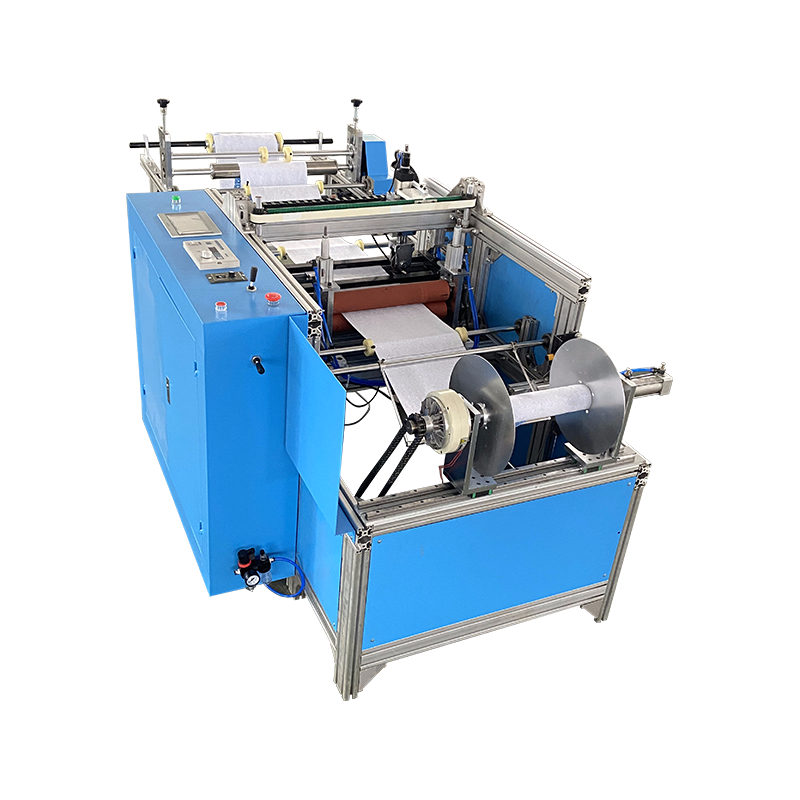Request A Quote

Tension and alignment systems in towel cutting machines play a critical role in preventing fabric distortion, especially during high-speed operations. These systems ensure that the fabric remains smooth, stable, and properly positioned as it moves through the machine, leading to precise cuts and consistent quality. Here's how they achieve this:
Fabric Tension Control
Constant Tension Maintenance:
Tension control systems apply consistent force to the fabric roll, preventing it from sagging or stretching as it feeds into the cutting area.
Pneumatic or mechanical tensioners adjust the force dynamically based on the fabric's thickness and elasticity.
Feedback Mechanisms:
Sensors continuously monitor tension levels and adjust them in real-time to compensate for variations in fabric properties or roll size.
Load Cells:
Load cells measure the tension on the fabric and relay this information to the control system, ensuring precise adjustments.
Fabric Alignment Systems
Edge Detection Sensors:
Optical or laser sensors track the edges of the fabric, ensuring it is correctly aligned before entering the cutting zone.
Real-time feedback prevents the fabric from shifting laterally, which could lead to uneven cuts.
Guiding Mechanisms:
Mechanical or servo-driven guides keep the fabric centered as it moves through the machine, ensuring consistent alignment.
Auto-Correction Systems:
If misalignment is detected, the system automatically adjusts the fabric's position to bring it back on track.
Synchronization of Components
Feed Rollers:
Precision rollers ensure smooth and synchronized feeding of fabric, maintaining even pressure and avoiding wrinkles or bunching.
Speed Matching:
The speed of the feed rollers and cutting blades is synchronized to prevent jerking or pulling, which could distort the fabric.

Material-Specific Adjustments
Custom Settings for Fabric Types:
For stretchy or delicate fabrics, tension systems reduce force to prevent overstretching, while alignment systems adapt to the material's properties.
Layered Fabric Handling:
When cutting multiple layers, the system ensures even tension and alignment across all layers to avoid mismatches or uneven edges.
High-Speed Adaptations
Advanced Sensors and Controls:
High-speed operations rely on faster sensor feedback and more responsive control systems to maintain precision.
Anti-Vibration Design:
The machine's structure is designed to minimize vibrations that could affect tension and alignment at high speeds.
Dynamic Adjustments:
Smart algorithms predict and adjust for potential distortions during rapid movements, maintaining stability.
Integration with Automation
Pre-Set Tension Profiles:
Machines can store profiles for different towel sizes and materials, automatically adjusting tension and alignment settings for each job.
Monitoring and Alerts:
Real-time monitoring systems alert operators to any deviations in tension or alignment, allowing for immediate corrections.
Benefits of Tension and Alignment Systems
Precision Cuts:
Ensures straight, clean cuts without frayed or jagged edges, even at high speeds.
Reduced Material Waste:
Prevents fabric distortions that could lead to unusable sections or rework.
Improved Machine Efficiency:
Allows for consistent performance during prolonged, high-speed operations.
Enhanced Fabric Quality:
Maintains the integrity of the fabric, preserving its appearance and texture.
Copyright © ChangZhou AoHeng Machinery Co., Ltd. All Rights Reserved

 English
English 中文简体
中文简体 русский
русский Español
Español